
|
Bioscience Discovery and Evaluation Grant Program (BDEG or POCsb)
Overview
The flow of inventions from research universities to the marketplace is often pictured as a linear path where good ideas obtain funding. However, market financial mechanisms are imperfect when applied to university technology commercialization; consequently, many good technology ideas do not receive funding and when they do, the path is often circuitous. A funding gap exists between inventions that exhibit commercial promise and adoption of the technologies by the commercial sector. Preclinical research studies for developing nascent university bioscience IP are necessary for the purposes of broadening patent claims and enhancing licensing prospects. The focus of this preclinical research is typically related to understanding or enhancing the most appropriate application of the technology, such as (in the case of medical device technologies) building a bench prototype.
The Colorado legislature realized that a funding gap exists for university inventions, and in 2006 began to address this problem for biosciences related IP through the creation of a law (HB 1360) that provided matched funding to Colorado research institutions. The bill, called the “Advancement of New Bioscience Discoveries at Colorado Research Institutions through Evaluation and Making an Appropriation,” essentially created a State bioscience proof of concept (POC) program. In 2007 the legislature enacted HB 1001, which expanded and extended the State Bioscience Discovery Evaluation Grant program. TTO manages this program for the University of Colorado. This program is essentially a large-scale bioscience POCg program (from $50-200K per award) that is equally funded by the State and the University of Colorado. This program supports development-oriented research to accelerate commercialization by reducing inventions to operational practice and validating their ability to address significant market applications. Commercialization potential from the selected research projects should be realized by companies operating in Colorado. Typical examples of development research objectives that may dramatically increase commercial value and applicability for inventions are:
- Pre-commercial and applied research – validating drug targets and biomarkers for clinical application, drug formulation/reformulation, or developing market and label expansion opportunities for existing technologies and products.
- Advancement of hypothesis testing, such as testing an idea or in silico prediction with in vitro experiments, extending in vitro results with in vivo experiments, or building a bench prototype.
- Product development – screening small molecule libraries, producing antibodies, selecting target-binding peptides, or aptamers; formatting assays; optimizing specifications of devices and processes.
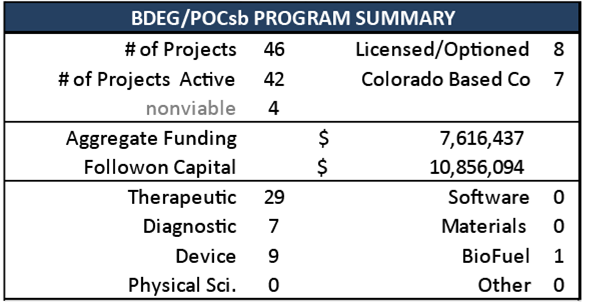
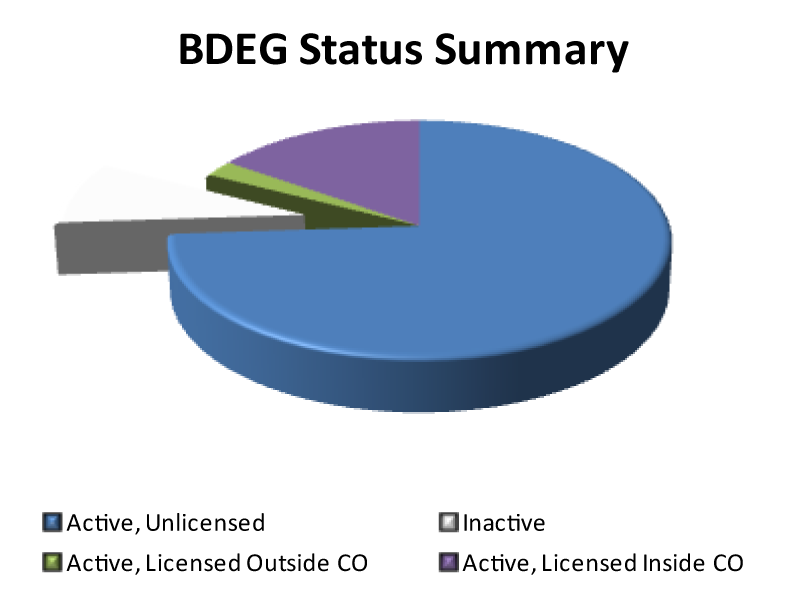
Status of the Class of 2006 BDEG Programs
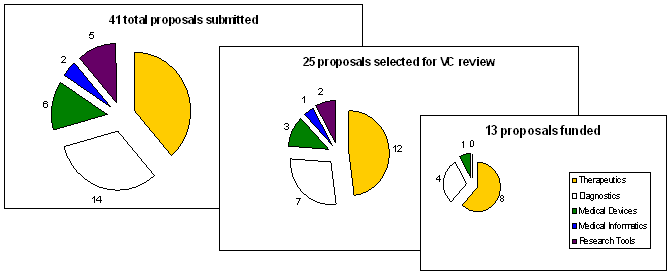
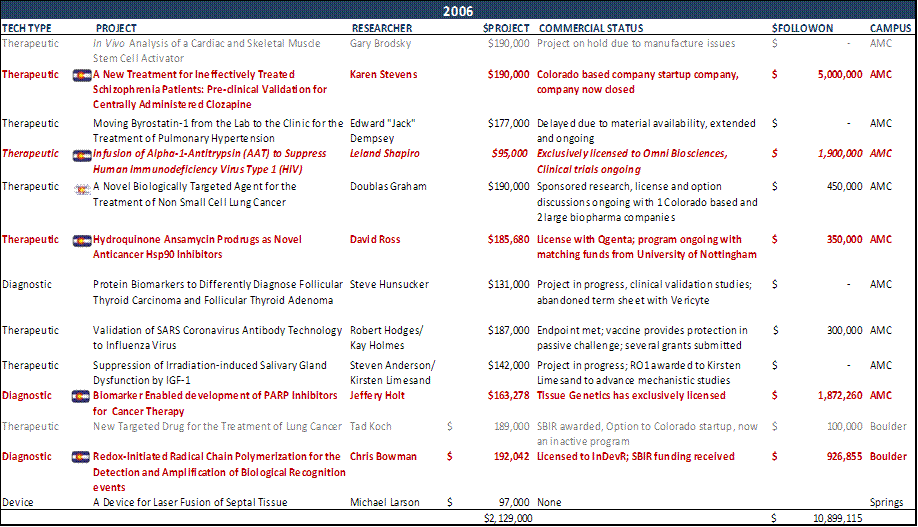
Status of the Class of 2008 BDEG Programs

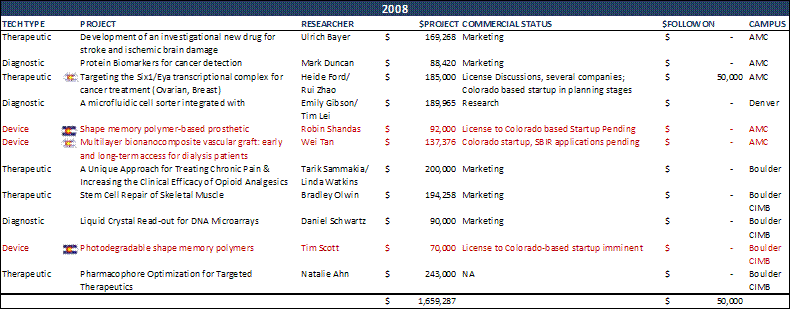
Status of the Class of 2009 BDEG Programs
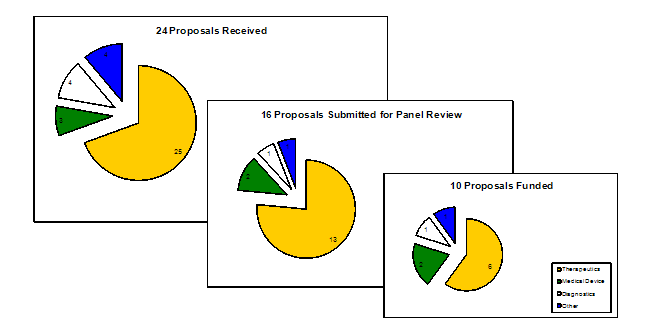
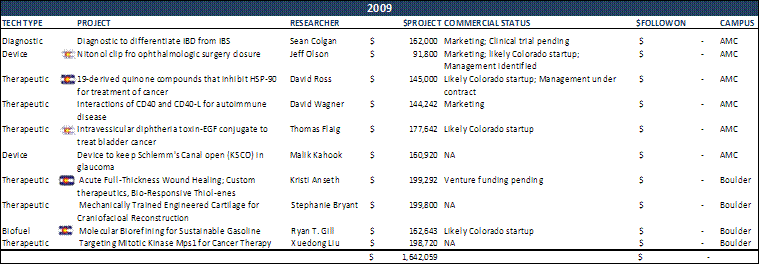
|